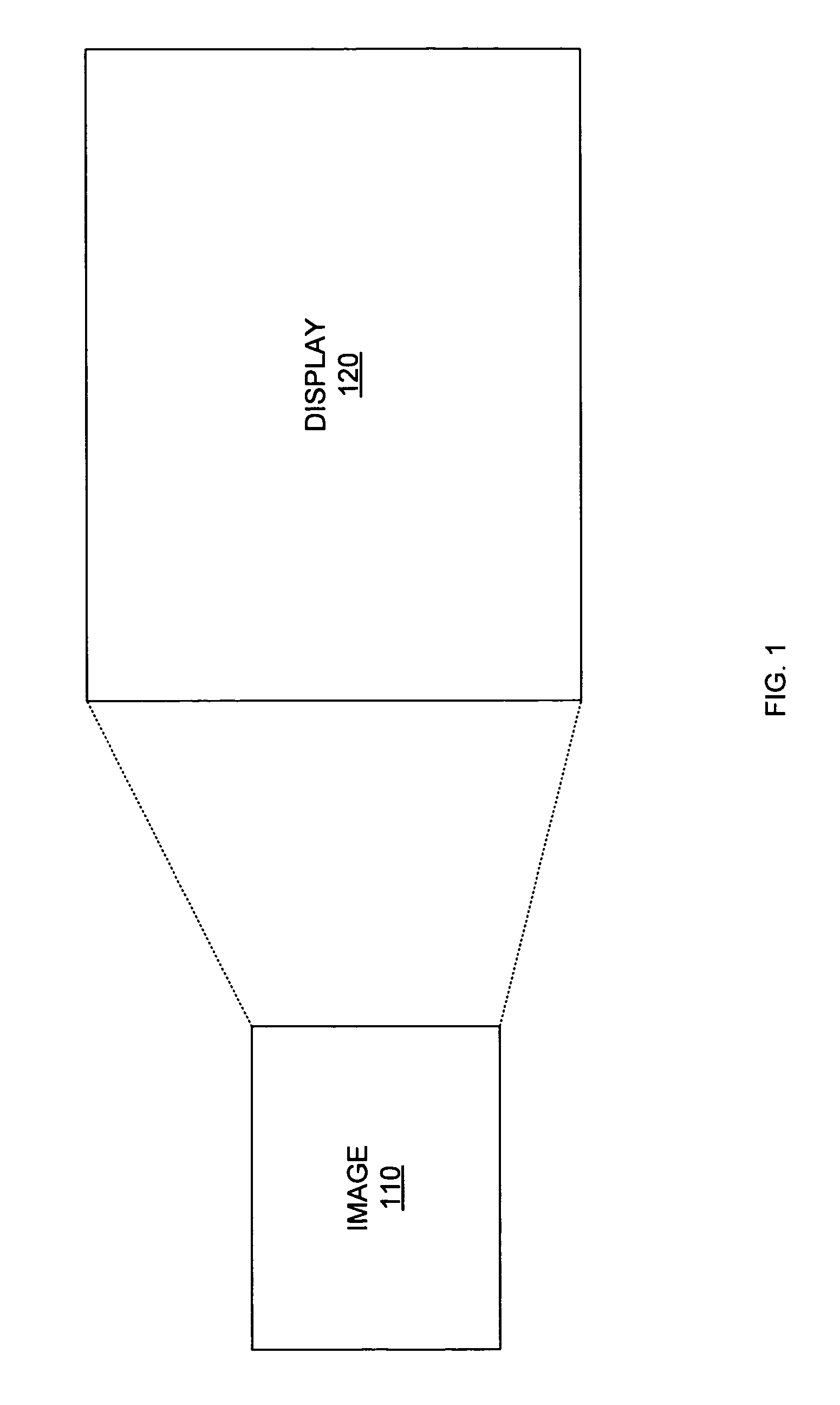Image scaler with controllable sharpness
a scaler and controllable technology, applied in the field of digital image and video processing, can solve the problems of reducing the quality of scaled images, and reducing the difficulty of scaling
- Summary
- Abstract
- Description
- Claims
- Application Information
AI Technical Summary
Benefits of technology
Problems solved by technology
Method used
Image
Examples
Embodiment Construction
[0023]As explained above, conventional scaling techniques may cause blurring, blocking, and saw tooth artifacts in an up-scaled (i.e., enlarged) image and may cause excessive graininess in a down-scaled (i.e., reduced) image. To reduce saw tooth artifacts, the present invention uses a high frequency adjusted position in place of the corresponding position to generate a pixel P(x, y) of the scaled image. Specifically, the high frequency adjusted position is moved horizontally in the direction of the larger magnitude of horizontal high frequency components. Similarly the high frequency adjusted position is moved vertically in the direction of the larger magnitude of vertical high frequency components. The amount of movement is proportional to the high-frequency components of the neighboring pixels. Furthermore, the present invention adjusts the sharpness of the scaled image to reduce the flaws of the scaled image. Specifically, the present invention calculates a sharpness compensation...
PUM
 Login to View More
Login to View More Abstract
Description
Claims
Application Information
 Login to View More
Login to View More - R&D
- Intellectual Property
- Life Sciences
- Materials
- Tech Scout
- Unparalleled Data Quality
- Higher Quality Content
- 60% Fewer Hallucinations
Browse by: Latest US Patents, China's latest patents, Technical Efficacy Thesaurus, Application Domain, Technology Topic, Popular Technical Reports.
© 2025 PatSnap. All rights reserved.Legal|Privacy policy|Modern Slavery Act Transparency Statement|Sitemap|About US| Contact US: help@patsnap.com



